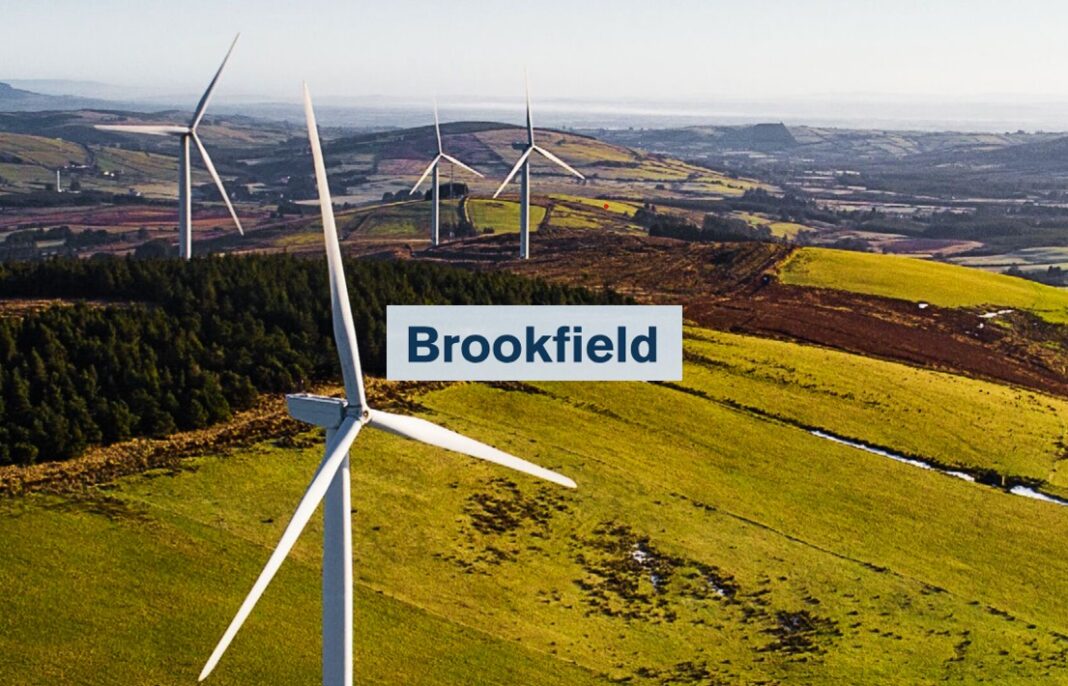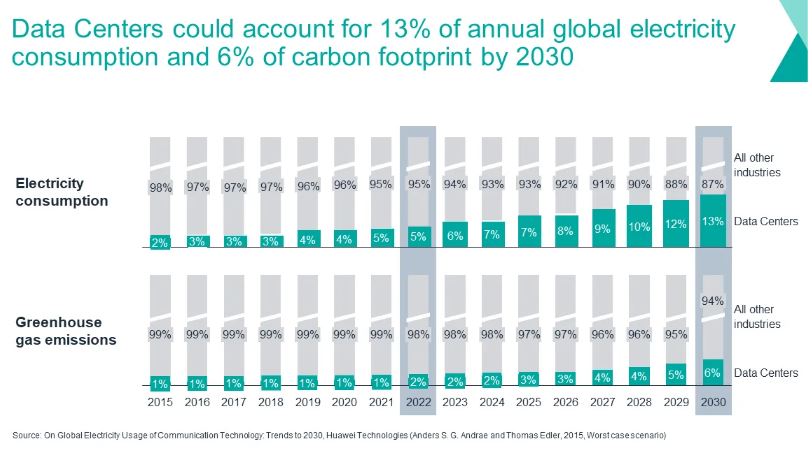Brookfield Renewable Partners LP, a major player in the renewable energy sector, strategically positions itself to meet the soaring demand for electricity from data centers by leveraging its robust development pipeline and acquisition strategy. This strategy empowers the renewable energy giant to provide comprehensive supply solutions to data center clients requiring continuous power.
Data centers are power-hungry and are projected to expand massively, needing more electricity to cope with the artificial intelligence boom. Industry reports forecast that the increasing demand for AI power will continue to rise at an annual rate of 70% through 2027.
Estimates also project that data centers’ power use could increase by up to 13% by 2030, alongside a predicted share of global carbon emissions reaching 6% by the same year.
Consequently, power companies, especially those operating under regulation, are investing heavily in renewable energy initiatives to accommodate this surging demand.
Brookfield’s Renewable Energy Solution for Data Centers
Brookfield’s Renewable Power & Transition arm manages $102 billion in assets and operates 7,000+ power facilities. As one of the world’s biggest investors in renewable and climate transition assets, the company boasts 33,000 megawatts of power generation capacity.
The renewable giant operates across 5 continents and manages a diverse portfolio of solar, wind, hydro, and sustainable solutions.
Brookfield Renewable’s parent company, Brookfield Asset Management, will develop over 10.5 GW of new renewable energy capacity globally over the next 5 years to meet its global energy demands. Microsoft Corp. has joined Brookfield in this initiative.
Microsoft has already contracted 5.7 GW of US renewables capacity as of Feb. 28, with renewables developers securing contracts for over 4,012.6 MW of capacity in the 12 months ended Feb. 1 for data center use. Other hyperscalers (large-scale, highly optimized, and efficient facilities), such as Google and Amazon, have also pledged to curb their emissions.
The recently announced framework agreement with Microsoft outlines the provision of renewable energy by Brookfield Renewable, commencing in the US and Europe between 2026 and 2030.
Since the announcement of this agreement, Brookfield Renewable’s stock surged by 17% to close at $24.66 on May 2.
Partnering with Microsoft and Beyond
CEO Connor Teskey highlighted that a significant portion of this capacity will be in the U.S., where Brookfield Renewable has acquired development pipelines from various companies in recent years. These include Scout Clean Energy LLC, Standard Solar Inc., Duke Energy Corp., and Exelon Corp.
Furthermore, Teskey noted that Brookfield Renewable has sufficient projects in development to accommodate multiple similar agreements and to expand its partnership with Microsoft. He projected that by 2026 to 2030, the company could potentially generate well over 10 GW of renewable energy annually. He said that:
“When you have such strong visibility on tens or multiple tens of gigawatts of offtake… it allows you to lean into looking to source equipment, looking to source financing because you know that demand is going to be there.”
Teskey’s sentiment seems to be in the right direction as the U.S. and Canada also witness an expansion in renewable energy generation.
Sustainable Growth: Meeting Energy Demands
Completed Projects:
- The 190-MW Paintearth Wind Project in Alberta under a 15-year power supply contract with Microsoft. Project owners are Potentia Renewables Inc., Greengate Power Corp., and Pansolo Holding Inc.
- The 132-MW South Fork Offshore Wind Project off the coast of Long Island, NY – jointly owned by Eversource Energy and Ørsted A/S.
Newly Tracked Projects:
- The 445-MW gas-powered Ripley Energy Center Plant facility in Payne County, Okla, owned by the Associated Electric Cooperative.
- IP Quantum LLC’s proposed 374-MW Solace Solar Project in Haskell County, Texas.
As data center power needs surge amid the AI boom, Brookfield Renewable’s extensive renewable energy portfolio and partnerships with industry giants like Microsoft underscore its pivotal role in supplying sustainable solutions to meet the evolving energy demands of the digital age.



